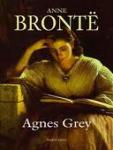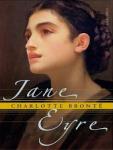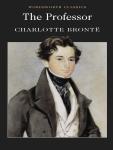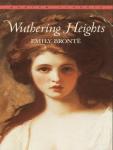Agnes Grey

Author:Anne Bronte
Tag:Anne BronteAgnes GreyEnglish
Agnes Grey is the debut novel of English author Anne Brontë, first published in December 1847, and republished in a second edition in 1850. The novel follows Agnes Grey, a governess, as she works in several bourgeois families. Scholarship and comments by Anne's sister Charlotte Brontë suggest the novel is largely based on Anne Brontë's own experiences as a governess for five years. Like her sister Charlotte's novel Jane Eyre, it addresses what the precarious position of governess entailed and how it affected a young woman.
Agnes Grey is the daughter of a minister, whose family comes to financial ruin. Desperate to earn money to care for herself, she takes one of the few jobs allowed to respectable women in the early Victorian era, as a governess to the children of the wealthy. In working with two different families, the Bloomfields and the Murrays, she comes to learn about the troubles that face a young woman who must try to rein in unruly, spoiled children for a living, and about the ability of wealth and status to destroy social values. After her father's death Agnes opens a small school with her mother and finds happiness with a man who loves her for herself. By the end of the novel they have three children, Edward, Agnes and Mary.
Jane Eyre

Author:Charlotte Bronte
Tag:Charlotte BronteJane EyreEnglish
Jane Eyre is a first-person narrative of the title character. The novel goes through five distinct stages: Jane's childhood at Gateshead, where she is emotionally and physically abused by her aunt and cousins; her education at Lowood School, where she acquires friends and role models but also suffers privations and oppression; her time as the governess of Thornfield Hall, where she falls in love with her Byronic employer, Edward Rochester; her time with the Rivers family, during which her earnest but cold clergyman cousin, St John Rivers, proposes to her; and the finale with her reunion with, and marriage to, her beloved Rochester. During these sections the novel provides perspectives on a number of important social issues and ideas, many of which are critical of the status quo (see the Themes section below). Literary critic Jerome Beaty notes that the close first person perspective leaves the reader "too uncritically accepting of her worldview" and often leads reading and conversation about the novel towards supporting Jane, regardless of how irregular her ideas or perspectives.
The Professor

Author:Charlotte Bronte
Tag:Charlotte BronteThe ProfessorEnglish
The Professor was the first novel by Charlotte Brontë. It was originally written before Jane Eyre and rejected by many publishing houses, but was eventually published posthumously in 1857 by approval of Arthur Bell Nicholls, who accepted the task of reviewing and editing of the novel.
The book is the story of a young man, William Crimsworth, and is a first-person narrative from his perspective. It describes his maturation, his loves and his eventual career as a professor at an all-girls school.
The story starts off with a letter William has sent to his friend Charles, detailing his refusal to his uncle's proposals to become a clergyman, as well as his first meeting with his rich brother Edward. Seeking work as a tradesman, William is offered the position of a clerk by Edward. However, Edward is jealous of William's education and intelligence and treats him terribly. By the actions of the sympathetic Mr. Hunsden, William is relieved of his position and gains a new job at an all-boys boarding school in Belgium.
The school is run by the friendly M. Pelet, who treats William kindly and politely. Soon, William's merits as a professor reach the ears of the headmistress of the neighboring girls school. Mlle. Reuter offers him a position at her school, which he accepts. Initially captivated by Mlle. Reuter, William begins to entertain ideas of falling in love with her, only to have them crushed when he overhears her and M. Pelet talk about their upcoming marriage.
Slightly heartbroken, he now treats Mlle. Reuter with a cold civility and begins to see the underlying nature of her character. Mlle. Reuter, however, continues to try to draw William back in, pretending to be benevolent and concerned. She goes so far as to plead him to teach one of her young teachers, Frances, who hopes to improve her skill in languages. William sees in this pupil promising intelligence and slowly begins to fall in love with her as he tutors her English.
Jealous of the attention Francis is receiving from William, Mlle. Reuter takes it upon herself to casually dismiss Frances from her school and hide her address from William. It is revealed that as she was trying to make herself amiable in William's eyes, Mlle. Reuter accidentally fell in love with him herself. Not wanting to cause a conflict with M. Pelet, Crimsworth leaves his establishment and moves out, in hopes of finding Frances.
Eventually bumping into his beloved pupil in a graveyard, the two reconcile. William gets a new position as a professor at a college, with an exceedingly high wage. The two eventually open a school together and have a child. After obtaining financial security, the family travels all around England and settle in the countryside next to Mr. Hunsden.
Villette

Author:Charlotte Bronte
Tag:Charlotte BronteVilletteEnglish
Villette is a novel by Charlotte Brontë, published in 1853.
Villette begins with its famously passive and secretive protagonist, Lucy Snowe, age 14, observing her godmother, Mrs. Bretton, Mrs. Bretton's son, Graham, and a young visitor, Paulina Home, known to everyone as "Polly." The child is a peculiar little thing and soon develops a deep devotion for the younger Graham, who showers her with attention until her stay is cut short when her father comes to take her away.
Lucy left the house soon after the child's departure, and after some initial hesitation, she was hired as a carer by Miss Marchmont, a rheumatic crippled woman. Soon she was accustomed to her new career and host, and started feeling content with the quiet lifestyle. However, in an evening with dramatic weather changes, Miss Marchmont magically regained all her energies and felt young again. She shared her sad love story of thirty years previously with Lucy, and concluded that she should try to treat Lucy better, be a better person since then and would get together with her dead lover through death. In the very next morning, Lucy found Miss Marchmont peacefully lifeless in bed.
In the ensuing years, an unspecified family tragedy forces Lucy into action, causing her to seek employment, and at age 23 she boards a ship for "Labassecour" (French for 'farmyard' and based on Belgium) despite not speaking a word of French on a hope that maybe she may find something in a new place. After arriving in the capital city of Villette, Lucy finds work as a teacher at Mme. Beck's boarding school for girls (which can be seen as a literary representation of the Hégers' Brussels pensionnat), and thrives despite Mme. Beck's constant surveillance of the students and staff.
Dr. John, a handsome English doctor, frequently visits the school because of his love for the coquette Ginevra. In one of Villette's famous plot twists, Dr. John is later revealed to be Graham Bretton, a fact that Lucy has known but deliberately concealed from the reader. After Dr. John discovers Ginevra's unworthiness, his brotherly instincts turn his attention to Lucy, and they become close friends which she values very highly despite her usual emotional reserve. We meet "Polly" again at this point (although her father has come into the title de Bassompierre which makes her now Paulina Home de Bassompierre) when Dr. Bretton saves her from being trodden upon at the theatre one night. They soon discover that they know each other and renew their friendship, which quickly blossoms into something more. The two fall in love and eventually marry, which Lucy has long seen coming, and she understands without sharing their facile happiness.
At the same time, Lucy has the first of several encounters with a shadowy nun in the attic who may be the ghost of a nun buried alive on the grounds for breaking her vows of chastity; in a highly symbolic scene, she finally finds the nun's habit in her bed and destroys it. She later discovers it to be the disguise of Ginevra's amour, de Hamal.
Lucy finds herself becoming closer to a colleague, the fiery schoolmaster M. Paul Emanuel; the two eventually fall in love. However, a group of conspiring antagonists, including Mme. Beck, the priest Père Silas, and the relatives of M. Paul's long-dead fiancée, struggle to keep the two apart, and finally succeed in forcing M. Paul's departure for the West Indies to oversee his plantation there. He nonetheless declares his love for Lucy before his departure, and arranges for her to live independently as the headmistress of her own day school or externat, which she later expands into a pensionnat. Villette's final pages are ambiguous; though Lucy says that she wants to leave the reader free to imagine a happy ending, she hints strongly that M. Paul's ship was destroyed by a storm on his return from the West Indies, killing him. She claims, for example, that "the three happiest years of [her] life" were those before M. Paul's return journey, which would suggest that he did indeed fall victim to the "destroying angel of tempest". Brontë described the ambiguity in the ending as a "little puzzle".
Wuthering Heights

Author:Emily Bronte
Tag:Emily BronteWuthering HeightsEnglish
Wuthering Heights is a novel by Emily Brontë, written between October 1845 and June 1846, and published in 1847 under the pseudonym "Ellis Bell." It was her first and only published novel: she died aged 30 the following year. The decision to publish came after the success of her sister Charlotte's novel, Jane Eyre. After Emily's death, Charlotte edited the manuscript of Wuthering Heights, and arranged for the edited version to be published as a posthumous second edition in 1850.
Wuthering Heights is the eponymous farmhouse on the Yorkshire moors where the story unfolds. Its core theme is the enduring love between the heroine, Catherine Earnshaw, and her father's adopted son, Heathcliff and how it eventually destroys their lives and the lives of those around them.
Although Wuthering Heights became a classic of English literature, it received mixed reviews when first published, and was considered controversial because its depiction of mental and physical cruelty was so unusually stark. In the second half of the 19th century, Charlotte Brontë's Jane Eyre was considered the best of the Brontë sisters' works, but later critics argued that Wuthering Heights was superior.